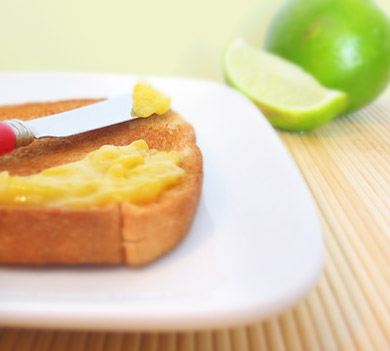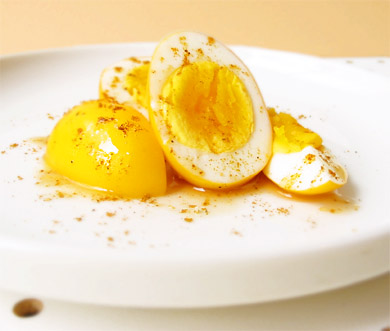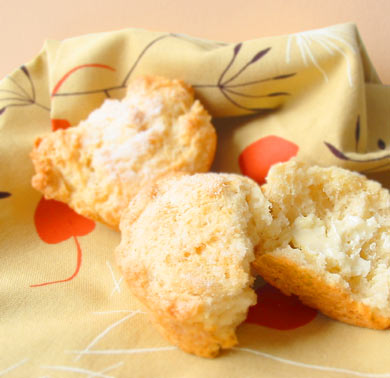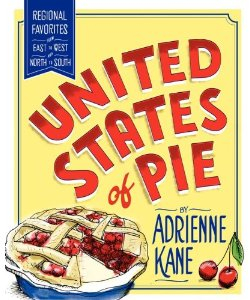 Sunday evening, 1987. I come to the table for a typical Sunday night meal. At the close of a busy weekend our dinners were filled with usuals: rotisserie chicken and a salad, some soup, leftovers from a more appropriate weekday meal, or sometimes my mother would whip up her version of Hamburger Helper– a mix of ground meat, a sauteed onion, and plenty of elbow macaroni. Now this wasn’t the sort of meal my mother would usually whip up, but on Sundays, typically fend for yourself night, this sort of American ease was a welcome change.
Sunday evening, 1987. I come to the table for a typical Sunday night meal. At the close of a busy weekend our dinners were filled with usuals: rotisserie chicken and a salad, some soup, leftovers from a more appropriate weekday meal, or sometimes my mother would whip up her version of Hamburger Helper– a mix of ground meat, a sauteed onion, and plenty of elbow macaroni. Now this wasn’t the sort of meal my mother would usually whip up, but on Sundays, typically fend for yourself night, this sort of American ease was a welcome change.
I have never even had traditional Hamburger Helper, neatly packaged in a cardboard box, with that jolly four-fingered gentleman smiling back at me; but I loved my mom’s version. It was pleasantly bland, seasoned only with salt and pepper, and I gobbled up the little crooked pasta which were far from al dente. It was starchy and simple, pleasing to my young palate. So what if I used a similar combination of foods: pasta, ground meat, onion, and perhaps a few herbs, and cooked it up to please my aging palate? Well I think I would like that too.
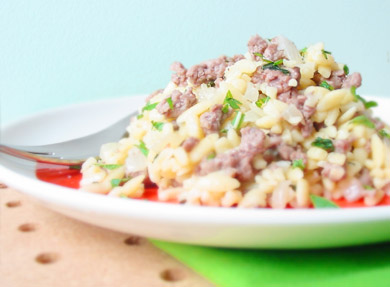 This is my version of Hamburger Helper– and I call it Lamburger Helper, Greek Style. Using the same principles of the Helper from my youth, and even prepared on the same night of the week, this satisfying meal was tasty enough to be prepared any night of the week.
This is my version of Hamburger Helper– and I call it Lamburger Helper, Greek Style. Using the same principles of the Helper from my youth, and even prepared on the same night of the week, this satisfying meal was tasty enough to be prepared any night of the week.
Set a pot of water to boil on the stove, and add one cup of orzo, that rice-shaped pasta, to cook while you prepare the lamb. In a dutch oven, or large skillet, fry up 3/4 pound of ground lamb, with one diced onion, in some olive oil. (I also crumbled in one small dried chili, but heat is a preference.) While the lamb and onion are browning, chop up some fresh mint. When the orzo is done cooking, drain and add to the lamb mixture, mixing well. A squeeze of tart lemon juice, a tablespoon or so of butter, a seasoning of salt and lots of freshly ground pepper, and a sprinkling of the chopped mint, and you’re just about ready to serve.
I ate my Lamburger Helper with a cooling cucumber salad, and I must say, I didn’t even miss that diminutive glove-of-a-character who claims to help me make a great meal. The meal was pretty great all on its own.


 Perhaps you all remember my quandary over the
Perhaps you all remember my quandary over the 
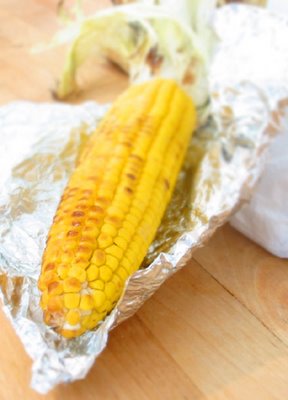
 My fridge is on a diet. It seems as though it has a close personal relationship with
My fridge is on a diet. It seems as though it has a close personal relationship with 